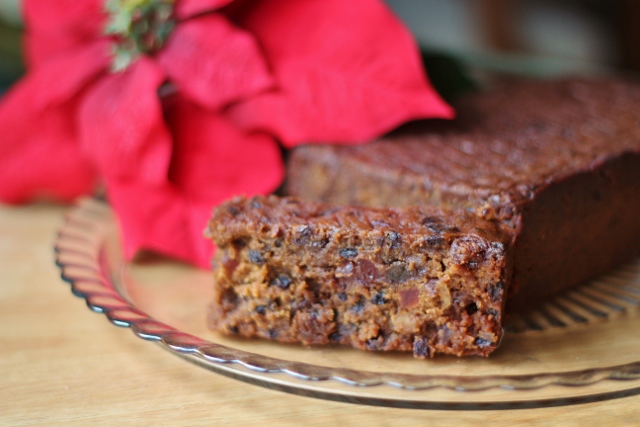FOOD
Saint Lucian Nina Compton for Top Chef!
 (SAINT LUCIA CONSULATE - NEW YORK) "Nina Compton has made Saint Lucia proud. She has taken the United States of America and the rest of the television world by storm in her quest to become America's Top TV Chef.
(SAINT LUCIA CONSULATE - NEW YORK) "Nina Compton has made Saint Lucia proud. She has taken the United States of America and the rest of the television world by storm in her quest to become America's Top TV Chef.
As I have said before, Saint Luci...ans at home and abroad are all proud of Nina and she knows she carries the support of each and every one of us, each time she presents a new winning dish.
Nina has made it to the final contest as one of the last two top chefs still standing. Now, more than ever, we must stand behind this daughter of Saint Lucia who so loves and displays the land of her birth.
Wednesday, February 5th will be Nina's date with destiny. That night she will face the grill and the judges with all the confidence that has taken her this far. But she will know all our eyes are on her and all our hearts are also with her.
I have said that winning 'America's Top Chef' title will be the best gift Nina can give to Saint Lucia as we prepare to observe the 35th Anniversary of the date her father led our island into nationhood through independence. Nina has shown us thus far that she can do it -- and we all know she can pull through on Wednesday evening.
The Government of Saint Lucia has teamed up with patriotic partners to host a viewing party at the Derek Walcott Square on Wednesday night. I am also aware that efforts are underway to host a viewing party at the Vieux-Fort Technical Secondary School.
I call on all Saint Lucians to join the live broadcast of Top Chef, decked out in our flag colours. I call on all local television stations and other media houses able and willing, to make appropriate arrangements to broadcast the event on Wednesday night.
Christmas Black Rum Cake Recipe

1 lb. prunes, seeded and chopped
1 lb. raisins,
1 lb. currants
1 lb. sultanas
¼ lb. mixed peel
½ Lb. cherries, chopped in half
¼ lb. chopped almonds
1 ½ cups cherry brandy
2 cups rum
2 cups or 1 lb. butter
2 cups or 1 lb. sugar (brown or granulated)
10 eggs(large)
2 tsp. grated lime peel
2 tsp. vanilla extract
1lb. or 4 cups flour
4 tsp. baking powder
2 tsp. ground cinnamon
¼ cup browning or more
1 cup mixture of rum, cherry brandy and sherry
METHOD
1. On the day before or a few days before baking cake combine prunes, raisins, sultanas, mixed peel,
cherries almonds, cherry brandy and rum.
2. Line three 8" round cake pans with double layers of wax paper.
3. Cream butter and sugar until light and fluffy.
4. Beat in eggs one at a time; add lime peel and vanilla.
5. Combine flour, baking powder and cinnamon; fold into creamed mixture gradually.
6. Add fruit and enough browning to give desired colour; stir well.
7. Put in lined baking pans ¾ full and bake in preheated oven at 250°F for first hour; reduce heat to
200°F - 225°F for remaining 1 ½ hours or until tester comes out clean.
8. Prick hot cake and soak with a mixture of rum, cherry brandy and sherry. Cover and set aside.
As alcohol soaks in pour more and continue to do so for 12 hours.
N.B. Fruit could also be soaked many months before use.
Caribbean Foods Glossary
 Ackee:
A handful of islands grow ackee as an ornamental tree, but only Jamaica looks at it as a tree that bears edible fruit. The ackee fruit is bright red. When ripe it bursts open to reveal three large black seeds and bright yellow flesh that is popular as a breakfast food throughout Jamaica. Ackee's scientific name, blighia sapida, comes from Captain Bligh, who introduced the plant to Jamaica from West Africa. Ackee is poisonous if eaten before it is fully mature and because of its toxicity, it is subject to import restrictions and may be hard to obtain in some countries. Never open an ackee pod; it will open itself when it ceases to be deadly. Ackee is sold canned in West Indian markets.
Ackee:
A handful of islands grow ackee as an ornamental tree, but only Jamaica looks at it as a tree that bears edible fruit. The ackee fruit is bright red. When ripe it bursts open to reveal three large black seeds and bright yellow flesh that is popular as a breakfast food throughout Jamaica. Ackee's scientific name, blighia sapida, comes from Captain Bligh, who introduced the plant to Jamaica from West Africa. Ackee is poisonous if eaten before it is fully mature and because of its toxicity, it is subject to import restrictions and may be hard to obtain in some countries. Never open an ackee pod; it will open itself when it ceases to be deadly. Ackee is sold canned in West Indian markets.
Allspice, Pimienta:
Dark-brown berry, similar in size to juniper, that combines the flavors of cinnamon, clove and nutmeg.
Annatto:
This slightly musky-flavored reddish yellow spice, ground from the seeds of a flowering tree, is native to the West Indies and the Latin tropics. Islanders store their annatto seeds in oil--giving the oil a beautiful color. Saffron or turmeric can be substituted.
Araňitas:
Fried "spiders" made of julienne strips of green plantains.
Arrowroot:
Neutral tasting starch extracted from the root of tropical tubers, used as a last-minute thickening agent for sauces.
Bay Rum:
The bay rum tree is related to the evergreen that produces allspice. Used to flavor soups, stews and, particularly, blaff, the small dark bay rum berry is called "maleguetta pepper" in the French West Indies.
Beans, Peas:
Interchangeable terms for red kidney beans, black beans, black-eyed peas, pigeon peas (gandules), and yellow and green lentils. Often combined with rice, used in soups and stews or pulped and made into fritters.
Bistec a la Criolla:
Marinated steak--typically rump, round or sirloin of beef.
Blaff:
A broth infused with whole Scotch bonnet peppers and bay rum leaves in which whole or filleted fish is poached.
Blue Marlin:
Jamaicans have little need for imported smoked salmon, as they enjoy their own classy variation from the nearby waters of the Gulf Stream. There's even a world-famous marlin tournament held in Port Antonio each year. The marlin that isn't immediately devoured as streaks is carried off to the smoker, where it takes on a milder salmon like flavor and texture that holds up well when thinly sliced.
Boudin, Black Pudding:
Sausage that may include pigs' blood, thyme and Scotch bonnet peppers. Frequently served with souse, a pork dish that can include any part of the pig.
Breadfruit:
Breadfruit was also introduced to Jamaica from its native Tahiti in 1793 by the infamous Captain Bligh. The breadfruit is a large green fruit, usually about 10 inches in diameter, with a pebbly green skin and potato-like flesh. Breadfruit are not edible until they are cooked and they can be used in place of any starchy vegetable, rice or pasta. Breadfruit is picked and eaten before it ripens and is typically served like squash--baked, grilled, fried, boiled or roasted after being stuffed with meat. It's even been known to turn up in preserves or in a beverage.
Bunuelos:
Similar to crullers, they are made with flour, cassava meal or mashed sweet potato and have fruit fillings like guava and banana.
Callaloo:
Spelled half a dozen different ways, this colorful word turns up in Jamaican records as early as 1696. This leafy, spinach-like vegetable is typical prepared as one would prepare turnip or collard greens. This variety of callaloo Amaranthus viridis), better known as Chinese spinach or Indian kale, should not be confused with the callaloo found in the eastern Caribbean, which refers to the leaves of the dasheen plant.
Carambola, Star Fruit:
Tart or acidy-sweet star-shaped fruit used in desserts, as a garnish for drinks, tossed into salads or cooked together with seafood.
Calabaza, West Indian Pumpkin:
Terms for a number of large squashes or pumpkins used in island stews and vegetable dishes. Hubbard and butternut squash are similar in flavor and make the best substitutes.
Cassareep:
Made from the juice of grated cassava root and flavored with cinnamon, cloves and sugar--this is the essential ingredient in pepperpot, the ubiquitous Caribbean island stew.
Cassava:
This tuber is also known as manioc and yuca. A rather large root vegetable with a 6- to 12-inch length and 2- to 3-inch diameter, cassava has a tough brown skin with a very firm white flesh. Both kinds of cassava can appear as meal, tapioca and farina and can be bought ready made as cassava or manioc meal, which is used to make bammie. Sweet cassava is boiled and eaten as a starch vegetable. Bitter cassava contains a poisonous acid that can be deadly and must be processed before it can be eaten. This is done by boiling the root in water for at least 45 minutes discard the water). Alternatively, grate the cassava and place it in a muslin cloth, then squeeze out as much of the acid as possible before cooking. Bitter cassava is used commercially but is not sold unprocessed in some countries.
Cherimoya:
Pale-green fruit with white sweet flesh that has the texture of flan. Used for mousse and fruit sauces, the fruit is best when fully ripe, well chilled and eaten with a spoon.
Chili Peppers:
Members of the Capsicum genus ranging from medium to fiery hot. Scotch bonnet pepper, the most widely used, can be replaced with serrano, jalapeno or other hot peppers.
Chorizo:
Spanish sausage that combines pork, hot peppers and garlic, and is similar to longaniza.
Christophine, Chayote, Cho-cho, Mirliton:
A small pear-shaped vegetable, light green or cream colored, and often covered with a prickly skin. Bland, similar in texture to squash and used primarily as a side dish or in gratins and souffles. Like pawpaw (papaya, it is also a meat tenderizer.)
Coco Quemade:
A pudding similar to flan. Also a base for ice creams and a replacement for creme anglaise.
Coo-coo (or cou-cou):
The Caribbean equivalent of polenta or grits. Once based on cassava or manioc meal. It is now made almost exclusively with cornmeal. Versatile coo-coo can be baked, fried or rolled into little balls and poached in soups or stews.
Coconut:
This member of the palm family, which is native to Malaysia, yields fruit all year long. Coconut is edible in both its green and mature forms. Both the water and the "jelly" of the green coconut find their way into island drinks, and meat from the mature coconut gives desserts a Caribbean identity.
Conch:
These gastropods are a beloved part of the cuisine as far north as the Bahamas and Florida. When preparing conch soup, conch salad or, best of all, spicy conch fritters, you must beat the tough conch flesh into tender submission with a mallet, the flat of a cleaver or a wooden pestle before cooking. The job can sometimes (depending on the recipe) be made easier by using a food processor.
Coriander, Cilantro, Chines Parsley:
Intense, pungent herb that looks like parsley. The seeds are used in curries.
Creole, Criolla:
Creole refers to the cooking of the French-speaking West Indies, as well as to southern Louisiana and the Gulf states. Criolla refers to the cuisine of Spanish-speaking islands. Both terms encompass a melding of ingredients and cooking methods from France, Spain, Africa, the Caribbean and America.
Dhal:
Hindu name for legumes; in the Caribbean, it refers only to split peas or lentils.
Darne:
The Caribbean name for kingfish.
Dasheen
Also known a coco, taro and tannia, dasheen is a starchy tuber that is usually served boiled or cut up and used as a thickener in hearty soups. While considered by some to have a texture and flavor superior to that of a Jerusalem artichoke or potato. Potatoes can often be used as a substitute for dasheen in recipes. Dasheen is often called coco, but coco is actually a slightly smaller relative of dasheen.
Escabeche:
The Spanish word for "pickled." It usually refers to fresh fish (and sometimes poultry) that is fried, then picked in vinegar, spices, hot peppers and oil.
Goat:
Goat meat is eaten with enthusiasm in only a few places in the world, and Jamaica is assuredly one of those places. Some credit immigrants from India who search din vain for lamb to prepare their beloved curry. Finding no lambs, they latched onto the next best thing--and curried goat became a Caribbean classic. Most first-timers find goat milder in flavor than lamb and an excellent substitute for lamb in most recipes. Of course, if you can't find goat, you can substitute lamb.
Guava, Guayaba:
Tropical fruit that has over a hundred species. It is pear-shaped, round and oval; yellow to green skinned, with creamy yellow, pink or red granular flesh; and has rows of small hard seeds. The smell and taste are intense and perfumy. Guava is used green or ripe in punches, syrups, jams, chutneys, ice creams and an all-island paste know as guava cheese.
Hearts of Palm:
Ivory-colored core of some varieties of palm trees.
Hibiscus, Flor de Jamaica, Sorrel:
A tropical flower--not to be confused with the garden-variety hibiscus--grown for it crimson sepal, which is used to flavor dinks, jams and sauces. It is available dried and fresh during the Christmas season.
Jack:
A fish family of over two hundred species, these colorful saltwater fish go by a host of varietal names such as yellowtail, greenback, burnfin, black and amber jack. These delicately flavored fish tend to be large, weighing a much as 150 pounds, and readily available in waters around the world. Tuna and swordfish make good substitutes.
Limes:
Caribbean limes have light yellow skins when ripe, though they are often picked green because they go bad rapidly when ripe. When overripe, they turn yellow and are an excellent source of vitamin C. For this reason, the popularity of these citrus fruits grew with the realization by the British Navy that they cured scurvy. Now limes are one of the most important ingredients in Jamaican sauces and marinades, and are used to perk up dishes from savory to sweet. Chicken and fish turn glorious with a mere squeeze of lime. And beverages, cakes and preserves wouldn't taste the same without it.
Lobster:
In Jamaica, it's the spiny or Caribbean lobster that is found--the same delicious crustacean as the langouste in France, and aragosta in Italy, and the langoasta in Spain. Although the texture of this cooked meat is consider in some to be inferior to that of the Maine lobster, the flavor of the spiny lobster meat more that makes up for the inferior texture.
Malanga, Yautia:
A relative of dasheen or taro, this tuber is prevalent throughout the Caribbean.
Mamey Apple:
The large tropical fruit, native to the New Worked, yields edible pulp that's tangerine in color. With a flavor similar to that of the peach, mammey turns up most often as jam.
Mango:
Actually a native of India, this fruit has come to be know as "the fruit of the tropics." Mangoes are used in a variety of ways in the Caribbean. Green mangoes are used in hot sauces and condiments, while ripe mangoes appear in desserts and candies and in drinks. The best varieties of mango are the Bombay, East Indian, St. Julian and Hayden.
Ñame
This giant tuber could be called by any of a variety of different names. The Spanish translation of the word ñame is yam. The outer skin is brown and coarsely textured, while the insided is porous and very moist. The ñame grows to enormous size and is considered to be the "king" of tubers.
Nutmeg:
Jamaican cooks are insistent--when cooking their recipes, skip over the pre-ground nutmeg sold in supermarkets and buy the spice whole, grating it only as needed. Nutmeg, the inner kernel of the fruit is more flavorful when freshly grated. The spicy sweet flavor of this aromatic spice makes it an excellent addition to cakes, puddings and drinks.
Okra, Okroes, Bhindi, Lady's Fingers, Gumbo:
This finger-shaped vegetable, green-ridged and three to five inches in length, is fried as a side dish, used as a thickening agent in callaloo or mixed with cornmeal to make coo-coo.
Otaheiti Apple:
Yet another fruit introduced from the Pacific by Captain Bligh, the pear-shaped otaheiti apple ranges from pink to ruby red in color. This fruit is usually eaten fresh, though it can be packed in red wine or turned into a refreshing cold drink.
Papaya:
This native of South America is still called ""pawpaw"" by some Jamaicans. The papaya has an orange color when ripe, and it's bland flavor resembles that of a summer squash, making it a nice complement to the shaper flavors of other fruits. Green papaya is often used as an ingredient in chutney or relishes and makes a nice main dish when stuffed. When ripe, it is eaten as a melon, or served in fruit salad. Papaya juice makes a nice drink when sweetened with condensed milk or sugar.
Passion Fruit, Maracudja, Granadilla:
Oval-shaped fruit that has a tough shell and a color range from yellow-purple to eggplant to deep chocolate. The golden-yellow pulp is sweet and tropically exotic, and must be strained to remove the seeds. Used primarily in juices, desserts, drinks and sauces.
Peas:
Jamaicans refer to nearly all beans as "peas." Kidney beans are probably the most popular. Gungo (pigeon) peas have also been a hit since their introduction from West Africa by the Spanish, as have cow peas, black-eyed peas, and butter, lima and broad (also called fava) beans. They are the island's primary source of protein--even more than meat. Smaller peas are used in Rice and Peas while larger-sized peas often appear in savory stews and side dishes.
Picadillo:
Spicy Cuban hash, made of ground beef and cooked with olives and raisins.
Pimento:
Just to keep things interesting, Jamaicans call what the world knows as allspice "Pimento"--a word that elsewhere refers o bell peppers or chiles. The more global name refers to the allspice berry, which has the taste of nutmeg, cinnamon, black pepper and clove. All the same, Jamaicans deserve a big say in this naming, since all but a tiny bit of pimento is grown in Jamaica, the remainder being grown in southern Cuba. Thanks to its embrace by English and Spanish colonist, allspice is used in numerous Jamaican classics, from Escoveitched Fish to Jerk Pork.
Plantain:
Technically a banana-family fruit, but generally regarded as a vegetable. Inedible raw, cooked plantains are served as appetizers or starchy side dishes. The unripe (green), ripe (yellow) and very ripe (dark) plantains are used in Caribbean cooking. They become slightly sweet as they ripen.
Saltfish:
Saltfish is any fried, salted fish, but most often cod. With he increasing availability of fresh fish all over Jamaica, some cooks are moving away from this preserved fish dating back to the days before refrigeration. Still, Jamaicans have a soft place in their hearts for the taste of this salted cod (sold around the world in Italian, Spanish or Portuguese markets under some variant on the name bacalao). Ackee and Saltfish is the preferred breakfast of Jamaicans. When imported saltfish has been unavailable, Jamaicans have been known to make their own from fresh fish.
Scotch Bonnet Peppers:
The fiery Scotch bonnet pepper, ranging in colors from yellow to orange to red, is considered the leading hot pepper in Jamaica, though several other varieties have recently been developed. Some peppers are sold whole, others are dried and ground, and still others are processed into sauces, such as Jamaica Hell Fire. If you can't get your hands (wash them afterward!) on Scotch bonnets, you can substitute habaneros or jalapenos.
Sofrito:
Spanish tomato sauce adapted to the islands, used to enhance roasts and thicken stews or soups.
Sorrel:
Brought from India by way of Malaysia, this unusual plant was introduced to Jamaica by the British soon after 1655. Also known as roselle and appealingly, flor de Jamaica, sorrel always blooms in December, when its deep red flower becomes an unrivaled floral decoration for two to three weeks before it evolves into Jamaica's traditional holiday beverage. At that time, the flower are dried and then steeped in water to make a bright red drink that has a slightly tart taste and is the color of cranberry juice.
Soursop, Corossol, Guanabana:
Elongated, spike-covered fruit, slightly tart and delicately flavored. It is used mainly in drinks, punches, sherbets and ice cream.
Stamp and Go, Baclaitos:
Spicy-hot fritters popular throughout the Caribbean. Methods, ingredients and names vary from island to island.
Star Apple:
An important part of a traditional dessert known a as matrimony, the star apple is a succulent round fruit about the size of an orange. Native to Jamaica and the Greater Antilles, the skin of this fruit is either a shiny purple color or a less eye-catching green. No matter what color, the flesh of the star apple is delicious.
Stinking Toe:
Actually a pod that resembles a human toe, this bizarre fruit possesses an evil-smelling and rough exterior. The sugary power inside can be devoured on the spot or turned into a flavorful custard or beverage.
Sugar Apple, Sweetsop:
An interesting challenge to eat, the flesh of the sweetsop is actually a collection of black seeds surrounded by sweet white pulp. The sweetsop is native to the tropical Americas.
Tamarind:
This decorative tree produces brown pods containing a sweet and tangy pulp that's used for flavoring everything from beverages to curries and sauces--including Angostura bitters and Pickapeppa sauce. It is also an important ingredient in Jamaican folk medicine.
West Indian Pumpkin:
A member of the gourd, squash and melon family, this squash is also known as calabaza. Possessing a sweet flavor similar to that of butternut squash, this firm-textured vegetable is commonly found in soups, stews, breads and sweetened puddings. Though hardly the same, the best substitutes for calabaza are Hubbard, butternut and acorn squash.
Yam:
Similar in size and color to the potato, but nuttier in flavor, it is not be confused with the Southern sweet yam or sweet potato. Caribbean yams are served boiled, mashed or baked.
Yautía:
A member of the taro root family, the yautía is the size of a potato, but more pear-shaped. It has a brown fuzzy outer skin. The flesh is white and slimy and is custard-like when cooked. It is one of the most natural thickeners, used to thicken soups, stews, and bean dishes. There is also a purple yautía which is also called mora.
Yucca:
Root vegetable similar in length and shape to a turnip, with scaly yamlike skin. Universally made into flour for breads and cakes, and used as a base for tapioca.







 Caribbean Corruption Report... Click here
Caribbean Corruption Report... Click here The Legacy of Usain Bolt - Click here
The Legacy of Usain Bolt - Click here





 Stopped by ICE:
Stopped by ICE: